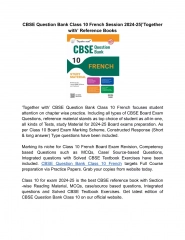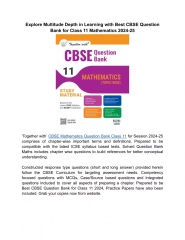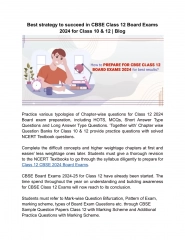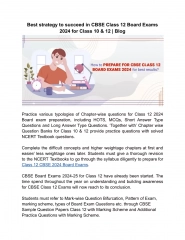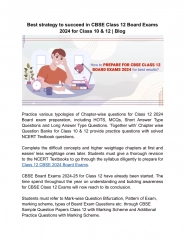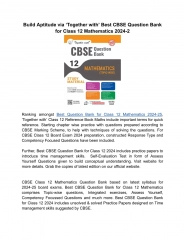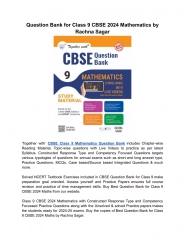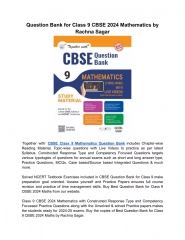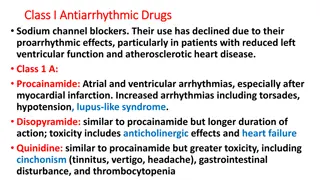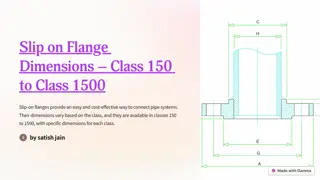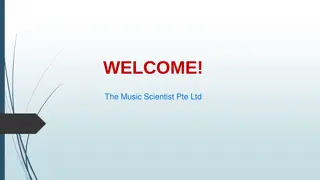
Innovative Training Solutions for Assessing Spine Function
Explore cutting-edge methods for assessing spine function in the field of health sciences education. Learn about anamnesis, physical examination, and medical history to effectively evaluate spine health. Discover how to detect warning signs and differentiate between yellow and red flags in assessing spinal impairments.
Download Presentation

Please find below an Image/Link to download the presentation.
The content on the website is provided AS IS for your information and personal use only. It may not be sold, licensed, or shared on other websites without obtaining consent from the author. If you encounter any issues during the download, it is possible that the publisher has removed the file from their server.
You are allowed to download the files provided on this website for personal or commercial use, subject to the condition that they are used lawfully. All files are the property of their respective owners.
The content on the website is provided AS IS for your information and personal use only. It may not be sold, licensed, or shared on other websites without obtaining consent from the author.
E N D
Presentation Transcript
Development of innovative training solutions in the field of functional evaluation aimed at updating of the curricula of health sciences schools MODULE BIOMECHANICS OF SPINE MODULE BIOMECHANICS OF SPINE Didactic Unit C: HOW DO I ASSESS SPINE? Didactic Unit C: HOW DO I ASSESS SPINE? C.1. What methods may I apply to assess the function of C.1. What methods may I apply to assess the function of the spine appropriately? the spine appropriately?
Development of innovative training solutions in the field of functional evaluation aimed at updating of the curricula of health sciences schools CLASS INDEX Assessing impairment: anamnesis and physical examination of the spine Measuring function in the spine: the most widespread devices ------------------------------------------------------------------------- Class workshop Physical examination: movement analysis
Development of innovative training solutions in the field of functional evaluation aimed at updating of the curricula of health sciences schools Assessing impairment: anamnesis and physical examination of the spine MEDICAL HISTORY (ANAMNESIS) - Personal data: status, health habits, etc. - Previous pathologies - Current illness: When and where the pain appeared; time of evolution. Nature of the pain: mechanical/inflammatory/neuropathic. Attenuating or exacerbating factors. Location and frequency of pain. Radiating and territory. Other associated symptoms: cephalea, dizziness, sensory or motor impairment, etc. age, profession, employment
Development of innovative training solutions in the field of functional evaluation aimed at updating of the curricula of health sciences schools Assessing impairment: anamnesis and physical examination of the spine MEDICAL HISTORY (ANAMNESIS) - Essential! Detect: Warning signs Interference in the progression of the illness YELLOW FLAGS Job environment: incapacitations or compensations. Prior treatment has failed. Mistaken beliefs about pain or fear of it. Psychosocial acceptance of their role as an ill person, disorders or alterations in mood, lack of social or family support or over-protective behaviours. Possible cause. RED FLAGS (lumbar pain) Neurological condition: severe paresis. Cauda equina syndrome. Ankylosing spondylitis pain. Prior trauma. Constitutional syndrome. Personal oncological antecedents. Associated fever syndrome. Drug addiction via parents. Steroid use. 1stepisode at <20 or >50 years of age. serious underlying factors: patient's
Development of innovative training solutions in the field of functional evaluation aimed at updating of the curricula of health sciences schools Assessing impairment: anamnesis and physical examination of the spine PHYSICAL EXAMINATION: CERVICAL SPINE - Inspection: asymmetries, attitude, posture, lumps, changes in skin colour, atrophies, etc. Palpation: painful areas, vertebral alignment, stability of the cervical structures, bulges, contractions or increase in muscle fibre tone, etc. Exploration of cervical mobility: active and passive. - -
Development of innovative training solutions in the field of functional evaluation aimed at updating of the curricula of health sciences schools Assessing impairment: anamnesis and physical examination of the spine PHYSICAL EXAMINATION: CERVICAL SPINE Neurological exploration (if advisable!): osteotendinous reflexes, strength and sensitivity. Root Painful territory Sensory damage Muscular weakness Reflexes affected Paraspinal muscles, superior shoulder Diaphragm, nuchal muscles, strap muscles Neck None C3-C4 Deltoid, supraspinatus, infraspinatus, rhomboid, biceps, brachioradialis Deltoid, supraspinatus, infraspinatus, rhomboid,biceps, brachioradialis, pronator teres, flexor carpi radialis, extensor carpi radialis Neck, shoulder, anterior arm Biceps, brachioradialis Shoulder C5 Neck, shoulder, anterior upper arm extending to antecubital fossa Thumb, index finger, radial forearm Biceps, brachioradialis C6 Triceps, latissimus dorsi, pronator teres, flexor carpi radialis, extensor carpi radialis Neck, shoulder, dorsum of forearm Middle finger Triceps C7 Ring, little fingers, hypothenar eminence Neck, shoulder, ulnar forearm Intrinsic hand muscles, finger extensors, finger flexors None C8 Intrinsic hand muscles Neck, shoulder, ulnar arm Ulnar forearm None T1 (Homer's syndrome)
Development of innovative training solutions in the field of functional evaluation aimed at updating of the curricula of health sciences schools Assessing impairment: anamnesis and physical examination of the spine PHYSICAL EXAMINATION: CERVICAL SPINE Specific tests: only if indicated and depending on diagnostic suspicion. SOTO-HALL TEST LAS GUE BRAQUIAL ADSON TEST JACKSON TEST SPURLING TEST
Development of innovative training solutions in the field of functional evaluation aimed at updating of the curricula of health sciences schools Assessing impairment: anamnesis and physical examination of the spine PHYSICAL EXAMINATION: DORSAL AND LUMBAR SPINE - Inspection: asymmetries, attitude, posture, lumps, changes in skin colour, deformity and alterations in physiological curves in the lateral plane, atrophies (including atrophy of lower limbs) etc. Palpation: painful areas, vertebral alignment, stability of the dorsolumbar structures and pelvis, bulges, contractions or increase in muscle fibre tone, etc. Exploration of dorsal and lumbar mobility: active and passive. - Dorsal: flexion and extension (extension: reduction of kyphosis/flexion: voluntary increase of dorsal kyphosis) + rotations. - Lumbar: flexion and extension, rotation, lateral flexion. - -
Development of innovative training solutions in the field of functional evaluation aimed at updating of the curricula of health sciences schools Assessing impairment: anamnesis and physical examination of the spine PHYSICAL EXAMINATION: CERVICAL SPINE Neurological exploration (if indicated!): osteotendinous reflexes, strength and sensitivity. Sensory damage Reflexes affected Root Painful territory Muscular weakness Iliopsoas, adductors, quadriceps Quadriceps, adductors, Anterior thigh, groin Anterior thigh Knee L3 Medial calf, medial foot Anterior thigh Knee L4 (iliopsoas) Posterolateral thigh and calf, extending into toe and dorsum of foot Posterolateral thigh and calf, extending into toe and dorsum of foot Tibialis anterior, tibialis posterior, extensor hallucis longus, peronei, gluteus medius, tensor fascia latae Dorsum of foot, great toe, lateral calf None L5 Lateral foot, posterior calf, sole of foot Gastroc-soleus, hamstrings, gluteus maximus Ankle S1
Development of innovative training solutions in the field of functional evaluation aimed at updating of the curricula of health sciences schools Assessing impairment: anamnesis and physical examination of the spine PHYSICAL EXAMINATION: LUMBAR SPINE Specific tests: only if indicated and depending on diagnostic suspicion. Other manoeuvres LAS GUE BILATERAL IN SEDESTATION LAS GUE & BRAGARD TEST NERI TEST PHALEN REVERSE LAS GUE LAS GUE IN DECUBITUS PRONE (BARRAQUER- FERR ) VALSALVA LAS GUE IN DECUBITUS (LATERAL)
Development of innovative training solutions in the field of functional evaluation aimed at updating of the curricula of health sciences schools Measuring function in spine: the most widespread devices & clinical scales MOVEMENT ASSESSMENT - Classic goniometers - Inclinometers Photogrammetry: gold standard in measuring kinetic parameters (related to mobility: angles, speed, acceleration). Others: Electronic inclinometers
Development of innovative training solutions in the field of functional evaluation aimed at updating of the curricula of health sciences schools CLASS INDEX Assessing impairment: anamnesis and physical examination of the spine Measuring function in the spine: the most widespread devices ------------------------------------------------------------------------- Class workshop Physical examination: movement analysis
Development of innovative training solutions in the field of functional evaluation aimed at updating of the curricula of health sciences schools WORKSH OP Physical examination: movement analysis - - Form work groups. In order to measure each segment, one of you will act as the patient and the others will take the measurement and note down the results. Change roles to measure each segment. You must follow the instructions for the measurement you have in your work sheet, and indicate the angle obtained in each field s corresponding segment. You may ask your teacher if you have any queries. You can take the measurements with the GONIOMETER, INCLINOMETER or both, depending on what instruments you have in the class. - - -
Development of innovative training solutions in the field of functional evaluation aimed at updating of the curricula of health sciences schools WORKSH OP Physical examination: movement analysis - You are going to take measurements of mobility using a goniometer and/or inclinometer (instructions in the physical examination file). In addition, you are going to carry out several tests to measure the flexibility of the dorsal and lumbar column using a tape measure. DORSAL COLUMN Ott s test This is used to measure the degree of flexibility in the dorsal column. It is carried out with the patient standing, measuring the distance between a point marking vertebra (spinous process) C7 and a point 30 cm below. The subject is asked to perform an anterior flexion, attempting to curve the dorsal region as much as possible, and vice-versa; with normal subjects performing anterior flexion, the distance between the two points marked increases from 2 to 4 cm, and in extension it decreases by 1-2 cm.
Development of innovative training solutions in the field of functional evaluation aimed at updating of the curricula of health sciences schools WORKSH OP Physical examination: movement analysis - You are going to take measurements of mobility using a goniometer and/or inclinometer (instructions in the physical examination file). In addition, you are going to carry out several tests to measure the flexibility of the dorsal and lumbar column using a tape measure. LUMBAR COLUMN Sch ber s test In this case, the two points marked correspond to vertebra S1 and a point 10 cm below. This distance should increase in flexion by about 5 cm for normal subjects, and decrease in extension by 2 to 3 cm. The test is positive (pathological) in flexion when there is an increase of less than 5 cm in the distance calculated between the two points.
The European Commission's support for the production of this publication does not constitute an endorsement of the contents, which reflect the views only of the authors, and the Commission cannot be held responsible for any use which may be made of the information contained therein.

